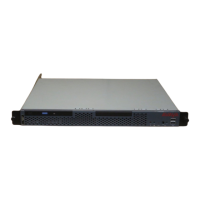High-level overview
32 Migrating to the Avaya S8700 or S8710 Media Server
June 2004
If you want to cutover and have the S8700 or S8710 Media Server control the existing EPNs while you
convert the PPN, you first must power down the PPN and then enable the IPSIs from the S8700 or S8710
Media Server. Do this only if the customer wants to minimize downtime. If the PPN also contains the
switch node carrier(s), then powering down the PPN also takes down the center stage switch (CSS).
This stage is service affecting for the PPN and, thus, the existing DEFINITY ECS system. It is out of
service while the carriers are changed out, which should take no more than 30 minutes.
Cutting over to S8700 or S8710 Media Server
control
Once the PPN is converted and you power it up, you want to cut over to the S8700 or S8710 Media
Server. To do this, you must enable the IPSIs on the IP Server Interface (IPSI) System Parameters screen.
This stage is momentarily service affecting as the CSS comes back up and the calls are load-balanced
across the IPSIs throughout the port networks.
Completing the migration
This stage includes verifying the customer’s data and upgrading IPSI firmware (if necessary). Alarms are
generated if the IPSIs do not have the most current firmware or do not all have the same firmware.
For information on other post-migration tasks, such as clearing alarms, backing up the media servers,
enabling alarm reporting, and registering the system, see Installing and Configuring the Avaya S8700 or
S8710 Media Server (03-300145) and go to the “Completing the installation administration” section.
This stage includes clearing alarms, upgrading IPSI firmware (if necessary), backing up the media
servers, enabling alarm reporting, and registering the system. Alarms are generated if the IPSIs do not
have the most current firmware or do not all have the same firmware.
This stage must be performed after the actual cutover. However, some parts of this stage (upgrade
firmware, register system) could be done before the cutover.
None of the operations performed in this stage is service affecting. However, if during alarm resolution
hardware needs to be replaced, it could result in a service interruption.
Testing the S8700 or S8710 Multi-Connect
configuration
This stage involves testing the complete system and verifying proper operation. Functional call
processing is tested, such as station-to-station calls, outgoing calls, incoming calls, and so forth. Various
hardware-related testing procedures are provided. These may or may not be performed, depending on
whether a given piece of hardware is configured.
Perform the testing procedures after the actual cutover is completed and while completing the migration.
These procedures are not service affecting. However, replacing hardware to resolve problems
encountered may be service affecting.

